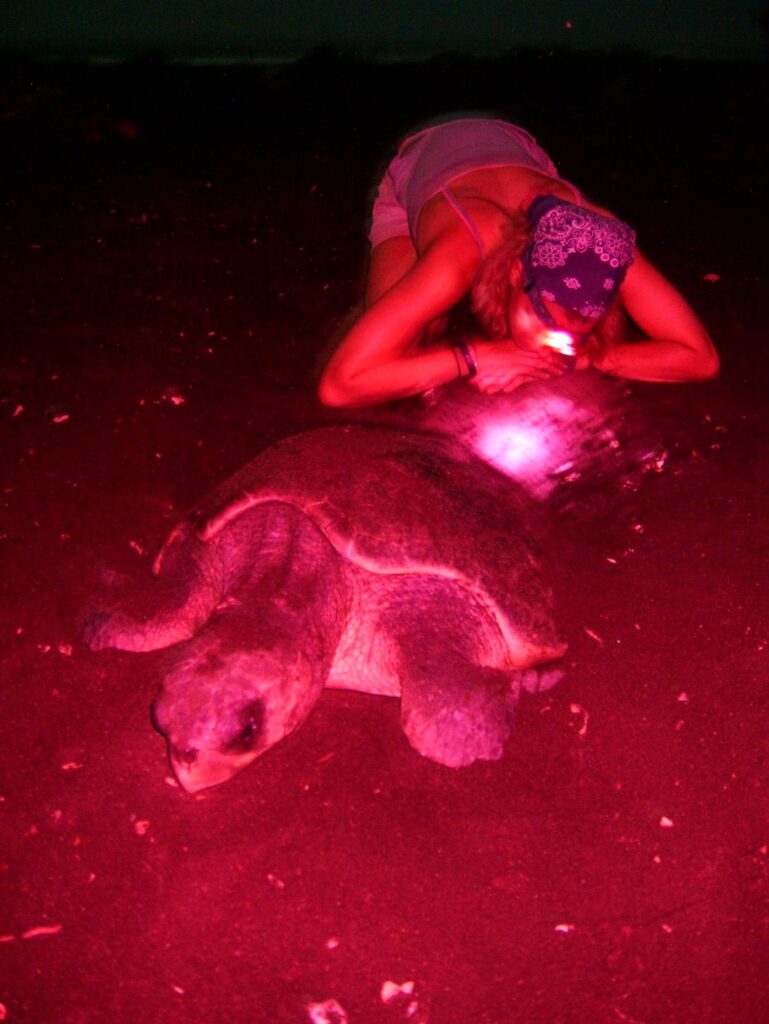It’s hard to imagine how a big rock floating in space hundreds of thousands of miles away could be such an important factor to the survival of species living on Earth. While these connections definitely still have some unsolved mysteries, we have enough information to know that the moon is somehow responsible for the success of breeding and navigation in all 7 species of sea turtles.
Some scientists have noted that the lunar cycle seems to have an influence on the frequency of sea turtle nesting. Studies have found that more turtles tend to nest either right before or during the first and last quarter phases of the moon. While the exact reason for this phenomenon hasn’t been determined yet, some scientists hypothesize that it may be an antipredator adaptation. The lower amounts of moonlight may make it harder for some animals to see the turtles, but still provide enough light for turtles to easily guide themselves up onto the beaches and back into the water.
Once babies hatch and dig themselves out of their nests, they too rely on the moon for navigational purposes. Sea turtles, like human beings, have color vision and can differentiate different colors in light. They can typically sense short wavelength color in light, such as white and blue, even better than human beings can. Baby sea turtles use this ability to guide themselves into the ocean after hatching, following the brightest short wavelength light they can see. Historically, this has been the white light of the moon reflecting off of the water in the dark of night. In recent years, however, humans have started installing street lights on roads near the beach and porch lights on the outside of their coastal homes, leaving them on all night in order to see. This can disorient hatching baby sea turtles, with some crawling in circles on the beach or even heading the complete opposite direction of the ocean, ending up in roads, backyards, or the mouths of predators on land.
While keeping bright lights off at night would be the most helpful solution to this problem from the perspective of the turtles, a lot of people also need to be able to see where they are going at night, especially when driving. That is why some scientists now recommend using dimmed long wavelength lights such as red and orange lights. These light colors have proven to be much less disorienting to turtles, helping to increase success rates of the babies’ journeys once again.
.
